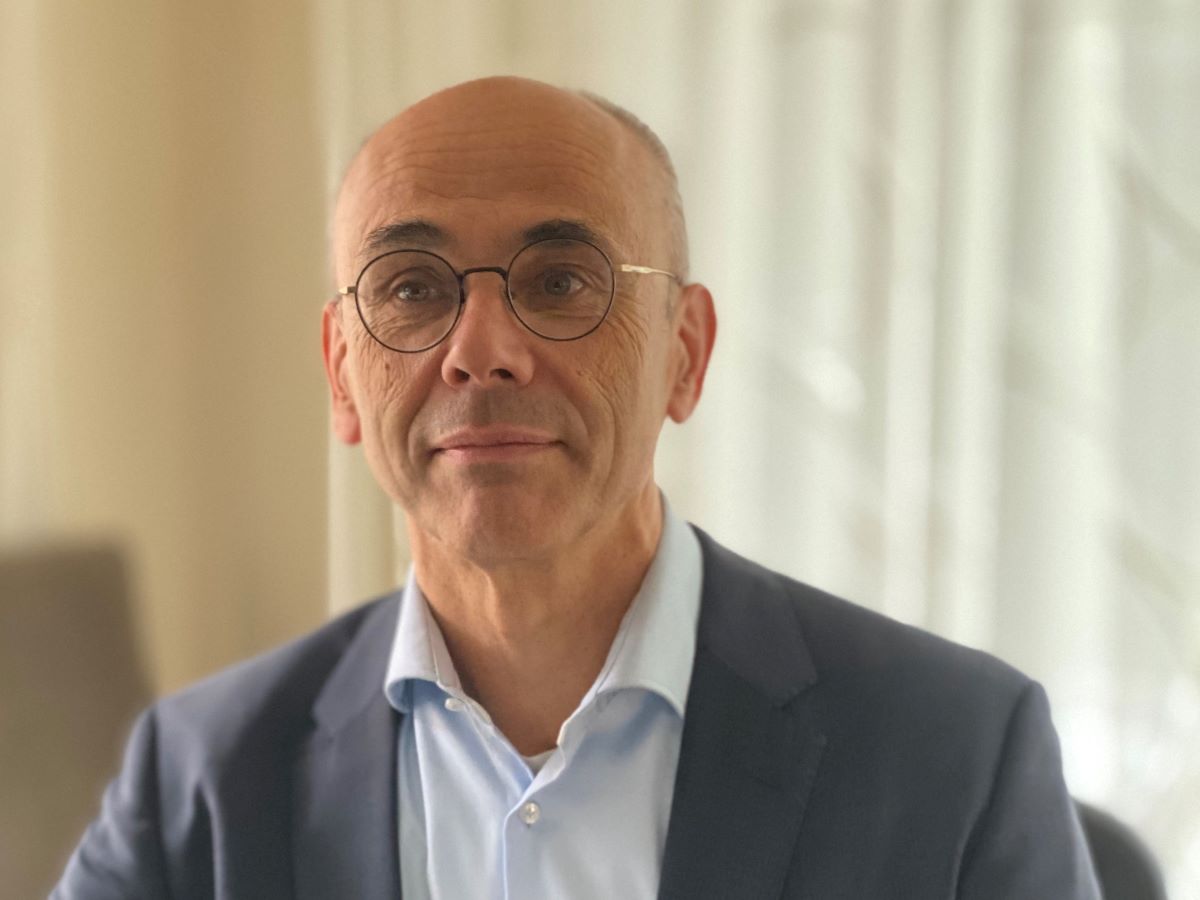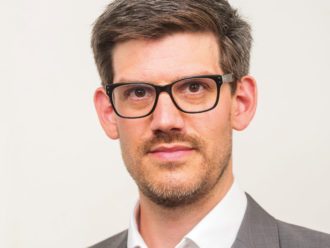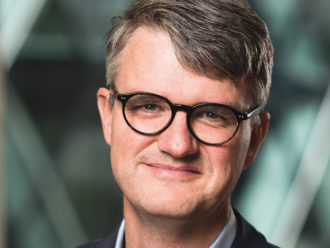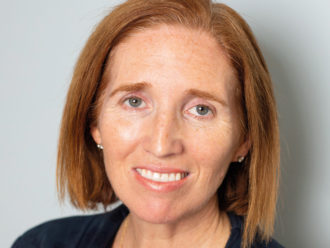Rob Schreur, CIO of National Grid’s pension scheme talks adapting to a constantly changing market environment and why the scheme does not rely on benchmarks.
You joined National Grid five years ago when the scheme was selling its in-house asset manager Aerion. How have those five years been?
Good. It was a great time to join National Grid as it was setting up an investment team from scratch that would have a different remit than Aerion.
Our core focus is risk management, asset liability management and investment strategy. We then select fund managers, much more so than Aerion did where the in-house management of assets was supplemented by external managers.
You joined National Grid from Philips’ retirement fund, having previously worked at Dutch public sector pension fund ABP. Does your experience with these schemes shape your work at National Grid?
Undoubtedly it does. At Phillips, we decided in 2005 to outsource our asset management division to BlackRock [then Merrill Lynch] and established a structure where the assets are managed externally by several managers. There was a team employed by the trustees to focus on risk, investment strategy and manager selection. Working with a small team enables a few things, one of them is informed, independent thinking. As a small team you should be aware of your limitations, so you try to structure an approach where you have access to experts in the field to inform your thinking.
Also, this might not come as a surprise but, being Dutch, we pay attention to costs. It is fair to say, compared to where the UK was back then, perhaps even where it is today, more attention was being paid to ESG and climate change.
So, a focus on risk, a small team of independent thinkers, ESG and costs are things I have imported to the UK and are reflected in how we go about with our investments at National Grid.
Why has National Grid divided its pension fund in sections?
The scheme was divided into sections in 2017 to reflect differences in sponsors and investment strategy. The sections are different in terms of the sponsoring entities, the level of risk they are taking and where they are on their journey towards self-sufficiency.
Whilst the governance has remained the same, there is one trustee board and one investment committee, all three sections are managed on a standalone basis with a tailor-made investment strategy.
Does this focus on risk give you more flexibility in responding to market challenges?
Whilst the three sections have their own strategy, and there are clearly differences in asset allocation, they are all managed in-line with a process where we pay a lot of attention to asset liability risk and adjust the assets to match our long-term market views.
About a year ago we decided to be underweight equities, not because we expected Covid, but because we felt there was no requirement for us to take that risk. This has worked well for the scheme. We have been on this de-risking journey for the past few years and so were equity light when Covid kicked in.
When you say you are working with a small team, how does it compare to your team at National Grid?
It is similar in size, with some small differences. The set-up is pretty much the same. My team at National Grid includes seven people who are covering everything from ESG-related questions to asset allocation, manager selection and risk. They are all equally valuable to have.
You said you are underweight equities. Could you tell us more about the asset allocation in your portfolios?
National Grid is a mature scheme. It is well funded and has been on a de-risking journey for a few years.
Our asset allocation differs by section. One has zero exposure to equities, the other an almost 5% allocation to that asset class. That is simply a reflection of where the scheme is in its journey. It also means that the weighting to LDI-type assets, whether that’s gilts, buy-and-maintain credit or buy-in transactions, is clearly a huge part of the overall asset allocation.
You might not have been too affected on the equity side by the volatility we saw in March, but being invested in equities still comes with challenges, doesn’t it?
As discussed, we changed the composition of the equity portfolio about a year ago. In terms of risk management, there are a few levers you can pull. One is how much you invest in equities and the other is the structure of your equity portfolio.
We felt that an approach which is a combination of quality and low volatility would make sense. In times of crisis, this could mean that we would fall slightly less than a traditional market cap benchmarked portfolio would. That will, hopefully, enable us a smoother journey in terms of de-risking.
That worked, but if markets recover quickly, we will most likely be lagging compared to where the market is.
You also mentioned active independent thinking. Does your equity portfolio have a high active share compared to market cap-based benchmark indices?
There is a lot of expertise available in the market, but, in the end, you need to make up your own mind on what will work for the trustees. If you just follow what is in vogue you will run from one strategy to another and that is something we try to avoid.
Informed, independent thinking to me also means keeping our eyes open and having a dialogue with these experts. We then establish to what extent it makes sense for us and for our trustees to use that expertise.
On the other hand, if you do things differently to the market then you need to be transparent with your trustees and, preferably, the sponsor as well. They need to understand why the way you go about things is different from common practice. To give you an example, we pay a lot of attention to what we call dynamic asset liability management, where we regularly update our expectations for the market and reflect that in the scheme’s asset allocation.
With that approach we do not have a benchmark, so it’s not like we have a set strategic asset allocation. What we do have is a set of approved assets that we can invest in and a set of approved ranges within which we can allocate along with other risk tolerance limits. Within that framework it is up to us to set the asset allocation, which is not measured against a traditional benchmark but to gilts+ ‘something’.
Secondly, we try to determine all the possible asset allocations one could establish within those ranges and risk limits, and how we performed against these other potential asset allocations. That is not an approach which is used a lot in the UK but is something the trustees were happy to accept.
Has this dynamic asset liability management approach been formed due to the maturity of the scheme?
Not necessarily. It is probably something that is more common in the Netherlands than the UK. We have this asset liability management focus, but it is also about being aware of the limitations of such an approach, where you try to be nimble and not to overestimate what you do. Most schemes would do an asset liability management study every three years, but it requires a lot of ‘forecasting’ expertise to set a fixed strategic benchmark for the next three to five years and not update it in the meantime.
Our approach is a bit like a satnav where you update a journey when you hit a traffic jam. We have our target destination and then we update our journey to reflect where the market is in terms of risk and expected returns.
What are the limitations of a more conventional approach?
When you set out to do an asset liability study every three years it requires a lot of comfort with your assumptions and, as we know, markets change all the time. So, you assume that you know more than you can know whilst an approach like ours means being aware that you cannot know everything. If you travel from London to Paris, Madrid, Germany, the Netherlands or wherever, you set out your expected journey and the satnav provides you with the ability to adjust your journey as you go along. You might be stuck at Dover because of traffic jams. That is why this approach where we update our assumptions more regularly in a structured manner hopefully will increase the probability that we reach our destination on time.
Recalculating the route, so to speak?
Exactly. That is one aspect, but we also have a more traditional investment risk analysis which is like a motor management system. Whilst you are driving, you need to be aware of if you have enough petrol, for example, or are low on oil. The two in combination should hopefully mean that you arrive at your destination safely.
This approach might be more suited to highly volatile markets?
Risk is such an intriguing topic. While we care about risk but less about the volatility risk which you can recoup from, we are mostly concerned with what’s outside those ranges. Where there is a risk that you will not be able to recover, the risk of ruin, is what we also try to establish.
In what scenarios would you not be able to recover?
This could hurt in an asset liability context where something might happen to our assets. If that has a mirror effect on our liabilities, then we would prefer it not to happen, but we will be okay. There are scenarios where your funding level could drop by 10%. Trustees are keen to avoid such situations, as are we.
Speaking about risk, what are the biggest systemic risks in the market at the moment?
In no particular order: climate change will provide great challenges but will probably also create opportunities. Climate is high on our agenda. It is about adhering to the Paris Agreement, but also about setting short-term objectives in terms of temperature alignment and how we can implement them into our asset allocation. The trustees recently decided to exclude thermal coal.
The binary prospect of facing deflation or stagflation, the challenges with regards to fair capitalism and how can we preserve capitalism whilst making it work to the benefit of all involved are other risks.
Then there is the impact of Covid and what it could mean for de-globalisation in addition to the global political scene.
To what extent will that have an impact on global supply chains? Will it increase costs? What does it mean for companies’ bottom line? Is it the case that whilst de-globalisation might increase costs and impact company earnings, that it improves the likelihood of these companies being able to re-pay their debt because they might be more resilient? The list is endless.
Closer to home, what is the impact of Brexit? Will its impact change because of Covid? The financial position of the UK government is different now than it was say, two years ago. These are all things we look at.
The first point you mentioned here was climate change. Earlier this year you awarded quite a big renewable energy mandate. Can you tell us more about that?
As part of our de-risking journey we want to have more investments in secure income assets. These are secure, cash-flow generating assets and this portfolio fits within that objective. Additionally, it also has beneficial ESG characteristics.
That is not the only mandate. ESG is something we have implemented across the board and is addressed in every review meeting because ESG is considered a risk driver. Certainly, for governance and environmental factors, there is now enough evidence that it pays to pay attention to it. Well governed companies usually make better investments.
How are you implementing ESG principles in your fixed income portfolio?
Clearly, the opportunities for engagement are different for an equity portfolio than for a credit portfolio. For our buy-and-maintain portfolio, which we intend to hold to maturity, we want to make sure these long-term risks are considered in the analysis before making the investment.
As part of a recent buy-and-maintain credit manager selection, we paid attention to how they try to incorporate ESG risks in their analysis. Whether it is tobacco or coal, we want to understand how a manager goes about implementing ESG.
Would you consider divesting from companies in certain sectors if the scope for engagement is limited?
If, after having gone through an appropriate process, in the end engagement doesn’t result in tangible improvements there is probably only one thing an investor can do.
There are obviously always factors outside your control which you have to steer around.
It starts with acknowledging that those factors are there and then it is up to you establish how resilient you want to be to them. We try to worry as much as possible in the process so that in the end we do not have to worry too much. The better we do our job the less eventful our journey should be. If it is an uneventful journey, we would have been lucky, but it also means that we have done a good job.
What does that mean? How do you mitigate risks in your portfolio?
It means investing in assets that are in-line with the scheme’s strategic objective. Depending on whether you pursue a cash-flow driven approach or are planning for buyout, you need to find the assets that fit that ultimate objective.
That means we gradually decreased our allocation to high-return assets and replaced them with what you could call “boring” assets. It also means reducing our allocation to private equity and property in a well-considered manner. That also means don’t rush if you do not need to.
Finally, what will be the long-term implications of the Covid pandemic for investors?
Let’s start with the low hanging fruit: People are still hesitant to go back to the office five days a week. Not so much because they do not like to be in the office but because they prefer not to commute on a packed train. What does it mean for your retail business? What will it mean for the property market? How will it affect those living in the centre of London compared to those living further away?
Who is going to pay for this in the end? Will it be financed by higher taxes for individuals or corporates? That will depend on what the political environment is.
We should expect a low return environment going forward. You could say that has been expected for many years and there have been booming equity returns but going forward you would expect low returns across all asset classes.
Investors are placing more money into private markets. I hope they are price and risk aware and do not go into those markets at any price. You want to be paid for the additional risk of illiquidity, but illiquidity can also be an advantage because you do not have to deal with the daily volatility of equity markets.
There are a lot of uncertain factors about the current situation, from the likelihood of a vaccine to elections in the US and Brexit. These factors will affect our investment strategy and we will adjust our journey based on them. It is a bit like an obstacle-course with constantly moving obstacles and we need to be able to get through it, which makes it interesting. It is, of course, easier to pretend that these obstacles are not there but you should be cognisant that there are many things that you just don’t know.




